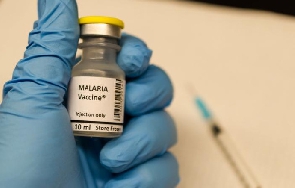Business News of Friday, 24 April 2020
Source: goldstreetbusiness.com
2019 economic growth target missed - GSS
Government at the end 2019 failed to meet its target for economic growth, as the growth achieved for the period fell behind target by 0.6 percent, according to the recent data from the Ghana Statistical Service (GSS).
This is the second consecutive year in which Ghana’s growth target has been missed after a spectacular rebound in 2017 from the sluggish growth suffered between 2013 and 2016.
Ghana’s provisional Gross Domestic Product (GDP) estimates for 2019 fell behind target, recording a growth rate of 6.5 percent as against a revised target of 7.1 percent for the period.
However, the latest data released by the Ghana Statistical Service (GSS) on Wednesday revealed that the country’s economy grew slightly faster last year than in the previous year, during which it grew by 6.3 percent. Instructively, last year’s growth rate was still far better than the less than four percent growth experienced around the middle of the previous decade. It may be the highest growth rate for the next couple of years as the dire economic effects of the coronavirus pandemic threaten to cut Ghana’s growth rate sharply and possibly push it into contraction.
The Government Statistician noted that the provisional GDP growth for 2019 was largely driven by the services sector, which recorded the highest growth rate of 7.6 percent, followed by Industry sector at 6.4 percent and Agriculture sector at 4.6 percent.
The Gross Domestic Product is the estimate of the total value of final goods and services produced in the country over a given period.
Real GDP estimate for the fourth quarter of 2019 was GHc 42,600.0 million compared to GHc 39,473.2 million in the fourth quarter of 2018. Further to this, the real non-oil GDP for the fourth quarter of 2019 was GHc 39,021.3 million compared to GHc 36,093.9 million in the same period of 2018.
This indicates that oil continues to be the key driver of economic growth. Indeed the non-oil annual GDP growth rate decreased from 6.5 percent in 2018 to 5.8 percent in 2019.
The slowdown in growth rate in growth rate could be attributed to a 10.4 percent growth rate in Mining and Quarrying activities (excluding Oil and Gas) in 2019 compared to 48.6 percent in 2018. Contractions in the Forestry and logging, Water and Sewerage and Construction sub-sectors also contributed to the slowdown in the non-oil GDP growth in 2019.
sectorial Contribution
Services
Services remains the largest sector, as its share of GDP increased from 46.3 percent in 2018 to 47.2 percent in 2019. The sector’s GDP growth rate increased from 2.7 percent in 2018 to 7.6 percent in 2019.
Two of the sub-sectors in this sector contributed more than 5 percent to the 2019 annual growth rates. These are Information and Communication with a growth rate of 46.5 percent and a contribution of 1.0 percentage points to total 6.5 percent GDP growth, ( 15.7 percent of total annual growth) and the Trade; Repair of Vehicles, Household Goods sub-sector, constituting 3.7 percent, contributed 0.4 percentage points to 2019’s annual GDP growth.
Industry
The Industry sector contributed 2.4 percentage points ( 37.5 percent of overall growth ) to 2019 annual GDP growth rate, though its share of GDP at basic prices increased by 0.2 percent from 34.0 percent in 2018 to 34.2 percent in 2019.
The main driver of 2019 GDP growth was the Mining and Quarrying subsector with a growth rate of 12.6 percent and contribution to total 6.5 percent annual growth of 2.0 percentage points (this accounting for31.2 percent of overall growth). There were contractions in the Construction sector at -4.4 percent and Water and Sewerage, Waste Management and Remediation Activities at -4.4 percent.
Agirculture
The Agriculture sector grew by 4.6 percent in 2019 compared to a growth rate of 4.8 percent in 2018. Its share of GDP declined from 19.7 percent in 2018 to 18.5 percent in 2019. Crops farming is the third-largest activity in Ghana with a share of 13.8 percent of GDP and it contributed 0.7 percentage points to the annual GDP growth. The Forestry and logging sub-sector contracted by -1.7 percent having recorded 2.4 percent growth in 2018
Government at the end 2019 failed to meet its target for economic growth, as the growth achieved for the period fell behind target by 0.6 percent, according to the recent data from the Ghana Statistical Service (GSS). This is the second consecutive year in which Ghana’s growth target has been missed after a spectacular rebound in 2017 from the sluggish growth suffered between 2013 and 2016.
Ghana’s provisional Gross Domestic Product (GDP) estimates for 2019 fell behind target, recording a growth rate of 6.5 percent as against a revised target of 7.1 percent for the period.
However, the latest data released by the Ghana Statistical Service (GSS) on Wednesday revealed that the country’s economy grew slightly faster last year than in the previous year, during which it grew by 6.3 percent. Instructively, last year’s growth rate was still far better than the less than four percent growth experienced around the middle of the previous decade. It may be the highest growth rate for the next couple of years as the dire economic effects of the coronavirus pandemic threaten to cut Ghana’s growth rate sharply and possibly push it into contraction.
The Government Statistician noted that the provisional GDP growth for 2019 was largely driven by the services sector, which recorded the highest growth rate of 7.6 percent, followed by Industry sector at 6.4 percent and Agriculture sector at 4.6 percent.
The Gross Domestic Product is the estimate of the total value of final goods and services produced in the country over a given period.
Real GDP estimate for the fourth quarter of 2019 was GHc 42,600.0 million compared to GHc 39,473.2 million in the fourth quarter of 2018. Further to this, the real non-oil GDP for the fourth quarter of 2019 was GHc 39,021.3 million compared to GHc 36,093.9 million in the same period of 2018.
This indicates that oil continues to be the key driver of economic growth. Indeed the non-oil annual GDP growth rate decreased from 6.5 percent in 2018 to 5.8 percent in 2019.
The slowdown in growth rate in growth rate could be attributed to a 10.4 percent growth rate in Mining and Quarrying activities (excluding Oil and Gas) in 2019 compared to 48.6 percent in 2018. Contractions in the Forestry and logging, Water and Sewerage and Construction sub-sectors also contributed to the slowdown in the non-oil GDP growth in 2019.












